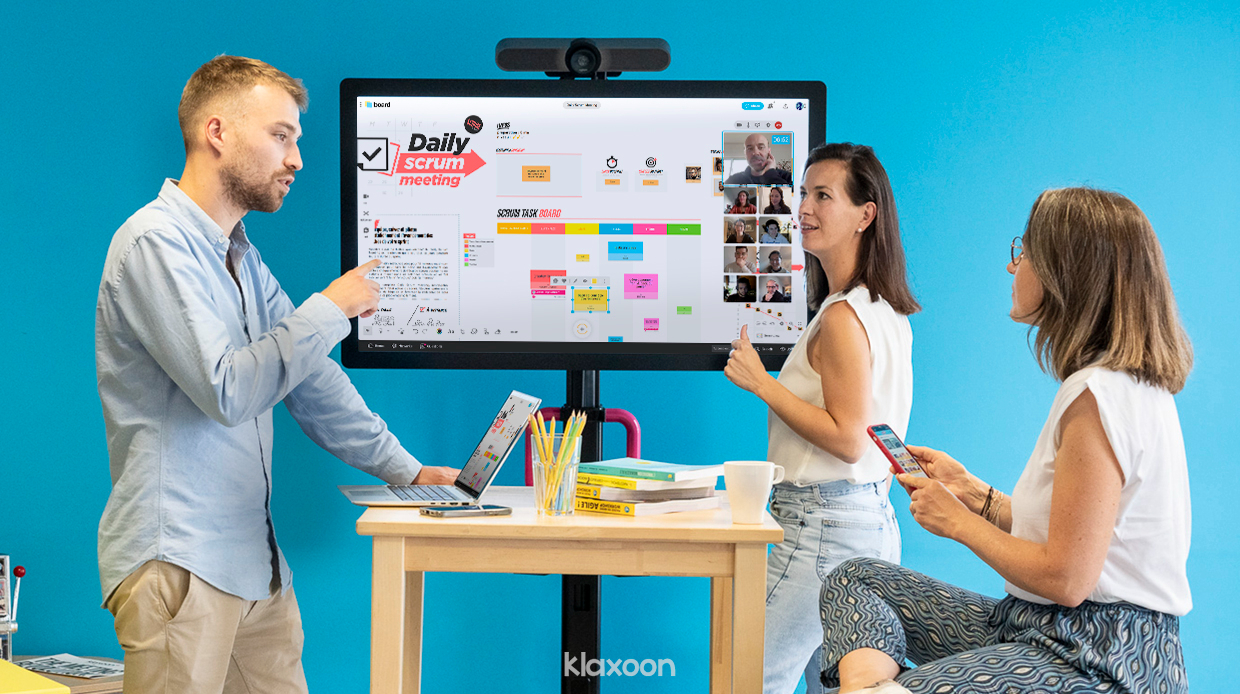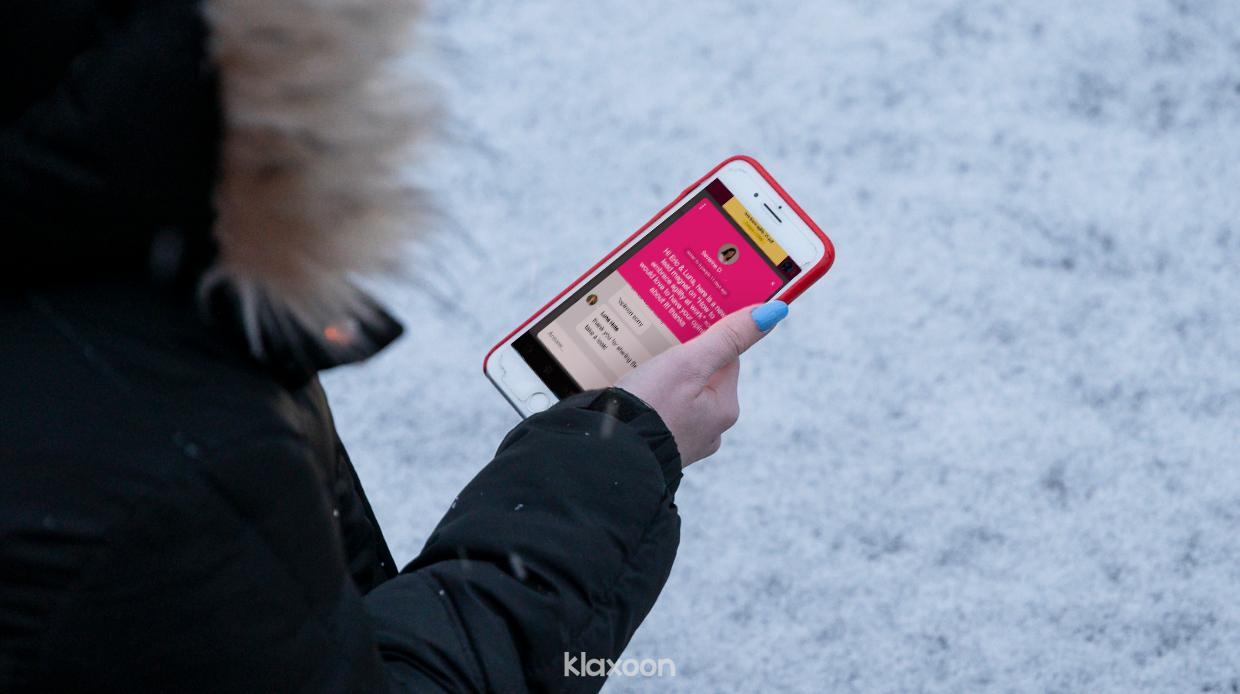Which meetings should be replaced by asynchronous work?
Published on May 16, 2025
Which meetings should be replaced by asynchronous work?
Asynchronous work is an innovative form of team collaboration, which can boost both collective and individual productivity. Used properly, it can replace at least half your meetings and more importantly make them much more productive. Here's how.
Did you know that nine out of ten meetings take place with at least one person missing? This means the overwhelming majority of them. And you’ve almost certainly had to attend one of these meetings. And probably also this one meeting organized afterwards, to explain to the missing person what happened during the first one. Are you starting to get a headache at this point? Not a big surprise. This is just one of the reasons why some meetings are unproductive, or quite simply unnecessary.
There are a lot of good reasons why you should hold meetings. Such as keeping a team in sync. But when a meeting is not necessary, there is a solution to keep any project moving forward: asynchronous work.
Asynchronous work is a way of organizing teamwork, where the different members of the group don't have to perform tasks at the same time. Put simply, asynchronous means that Paul and Mary work together, but at different times to move their project forward. So it’s actually the exact opposite of a meeting.


Alongside your meetings, asynchronous work should be considered.
With well-organized and coordinated asynchronous work, you can do away with most of your meetings. See how with the following two examples. And, as a bonus, at the end of the article you will find some practical tools to help you embrace asynchronous work.
Harnessing collective intelligence is very important. No doubt about it, two brains (or three, or even ten) are better than one. But, in some cases, you can be much more productive by working at your own pace, when you want, asynchronously.
This is what Nathalie Klotz and her team decided to do. A project manager at a Job Center, Nathalie promotes transformation and collaboration at the network’s agencies with respect to innovation and collective intelligence.
Nathalie and her team members needed to sum up all the actions and activities to be carried out within her network. So she organized a meeting with all the stakeholders to draw up this list and prioritize tasks to create a roadmap for the upcoming months. Except that at the end of an initial one-hour meeting, the only thing that has been finalized was this list of tasks. There was no time left to prioritize tasks. And they couldn't hold the same kind of meeting again to actually make this prioritization, due to scheduling conflicts and the usual absentees (nine out of ten meetings, remember?)
So what did they do? Nathalie tells us: "We decided to carry on working. And we didn't stop until we agreed on how everyone would work, separately, so we had a shared vision."
Each activity listed in this meeting corresponds to an area of work. There are four of them. Like the number of team members. So, each member takes responsibility for prioritizing activities in a specific area, asynchronously.


Some independent actions are more effective when carried out asynchronously.
It was a great success: "This way of organizing works really well because everyone can work when they want. Some in the morning, others in the evening. Everyone could organize themselves according to their schedule, and take their time. They're free to choose when they work. Everyone focuses on the subject to be dealt with, so it’s much quicker", explains Nathalie.
And during the second session, organized to finalize this joint effort, the asynchronous work done beforehand has also saved valuable time. "We concentrate solely on the topics where decisions need to be made. Discussions are entirely focused on agenda topics. As we all know the topics and the issues, there's no need to review anything, we focus on the essentials. We achieve our goal very quickly."
All this independent work, when it suits the team members, enabled Nathalie to save some precious time.
Less than one in four meetings result in decision-making. This statistic illustrates one of the problems with making our meetings productive. But turning some of the things you do in your meetings into asynchronous work could help you become more productive and make your meetings more useful.
This is what Sophie Delile did to make the strategic committee meetings more effective at the Ticket for Change school, of which she is a member.
The "strategic circle" at the Ticket for Change school is responsible for strategic decisions for the entire organization: budgets, recruitment, general trends. The first few times the circle met, it was very traditional: everyone addressed their topics, one by one. Sophie notes the problems with this way of working: "Previously, the meeting could last three hours. The decision-maker took their own notes. Everyone had a chance to express their feelings, make recommendations and even give their approval. Often, we were overwhelmed by decisions, forgetting why we were there. It was all very vague."
Something had to change. And this change entailed a healthy dose of asynchronous work. This is now the starting point for "strategic circle" meetings at Ticket for Change.
Because there are more and more topics and decision making is more complex, the strategic circle meetings start asynchronously.
Before each committee meeting, the facilitator sends the participants a document containing all the information required to understand the problems to be solved.
After reading this document, the members of the strategic circle are invited to share their views in a table that everyone can access. They can add their recommendations, their questions, give their approval using a predefined color code for each problem to be addressed.
This individual work is carried out whenever it suits everyone before the meeting. And it’s vital! Each person might need a different amount of time to get to grips with a topic, to understand it and to analyze it in depth. This way of working together makes it possible to respect each individual’s timing.


Thinking asynchronously before a meeting helps to save time and make the right decisions, once everyone is together.
Thanks to this information and filling in the table, the time together is spent on discussions, the agenda topics and decision-making itself.
Sophie Delile explains what they do now: "During the meeting, we can focus on points to be clarified or verified and look at each proposal in more depth."
The meeting time is devoted purely to collective intelligence. And meetings have become much shorter. Now they are just one hour long instead of three.
Reading about the topic and expressing their opinion before the meeting means everyone saves time: and then, fewer long-winded explanations when the team is together. This asynchronous work also allows everyone to understand the topic at their own pace. And Sophie concludes: "Today, with everyone's asynchronous work before the workshop, and the fact that topics to be dealt are differentiated using the color code, we’re much more effective, before, during and after the workshop."
To go one step further and help you embrace asynchronous work, you can put in place a whole series of best practices very easily.
First, by ending the culture of immediacy that prevails in organizations: responding to emails immediately or watching your instant messaging all day long. You’re almost certainly inundated with notifications, all the more so if you follow a hybrid work model. So, stop it all. You are not available all the time and your contacts probably do not need an answer straight away.
Working asynchronously also means choosing when you will be available for your colleagues. And so that you’re not the one who constantly disturbs others with messages, you should start using other, more asynchronous means of communication.
For example, do you remember our meeting with at least one absentee? Instead of going into an endless spiral to communicate information, how about a complete summary of the discussions available whenever you want and where you can ask questions or give your opinion?
This is what is so good about a tool like Memo, which you can use to explore a topic long after your meetings, or to prepare them beforehand by adding text, videos and photos.


To work well asynchronously, you need the right tools.
One of the advantages of asynchronous work is to be able to keep interacting outside meetings and to have the time to think. Eureka moments can come at any time. So, why not capitalize on your good ideas and discussions even when you're not in meetings? This is what you can do with the Question tool in the Workshop Platform. Open questions, challenges, surveys, a question can often change everything. And even asynchronously, you can boost commitment within your team.
As you will have realized, asynchronous work is not intended to make your meetings disappear forever, but to make sure that they focus on the right topics. Synchronously, capitalize on collective intelligence to make informed decisions and take advantage of the knock-on effect created by your meeting. Asynchronously, decide when you want to spend time thinking. You will boost efficiency on both counts.
Unlock your teamwork potential